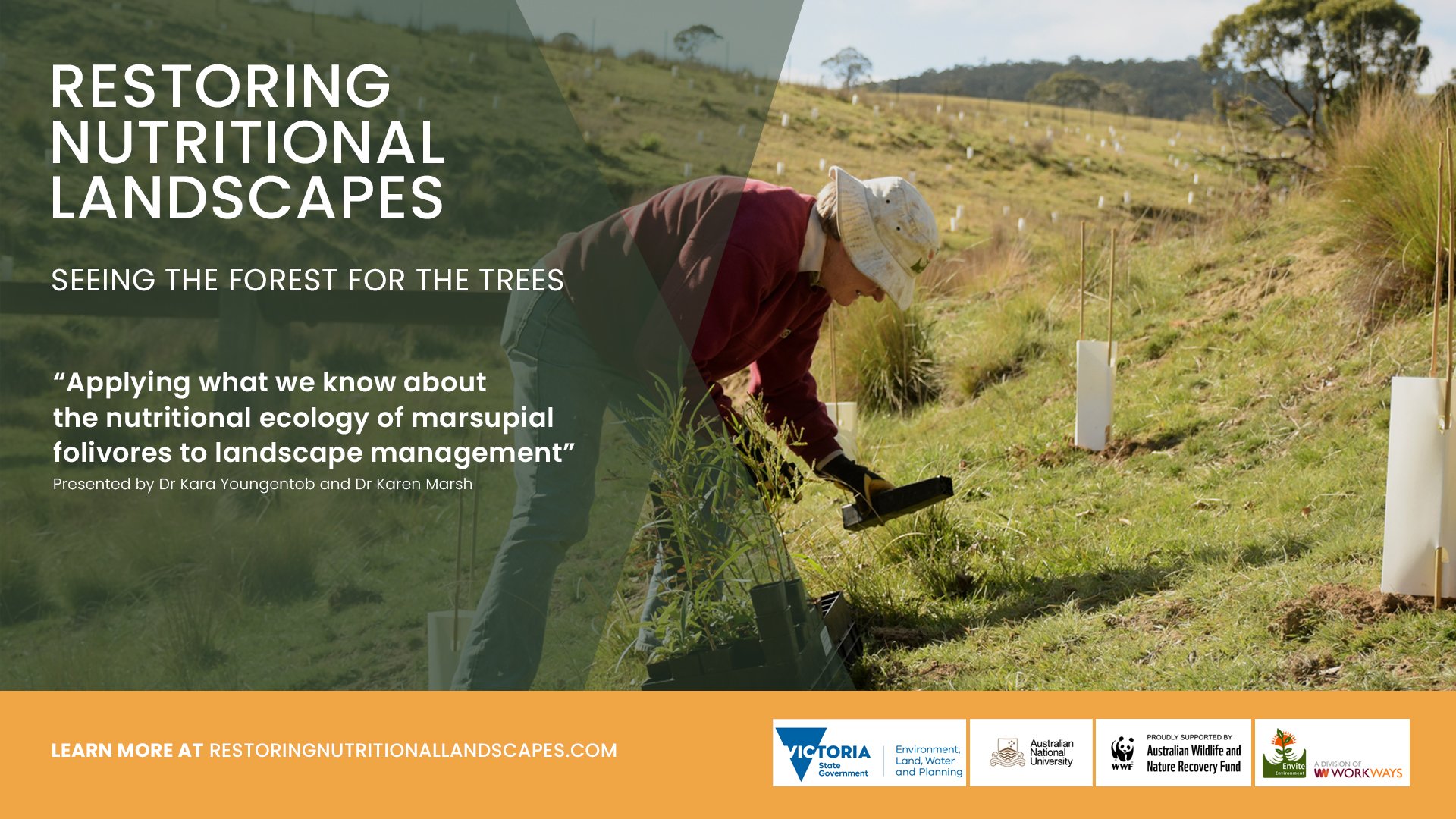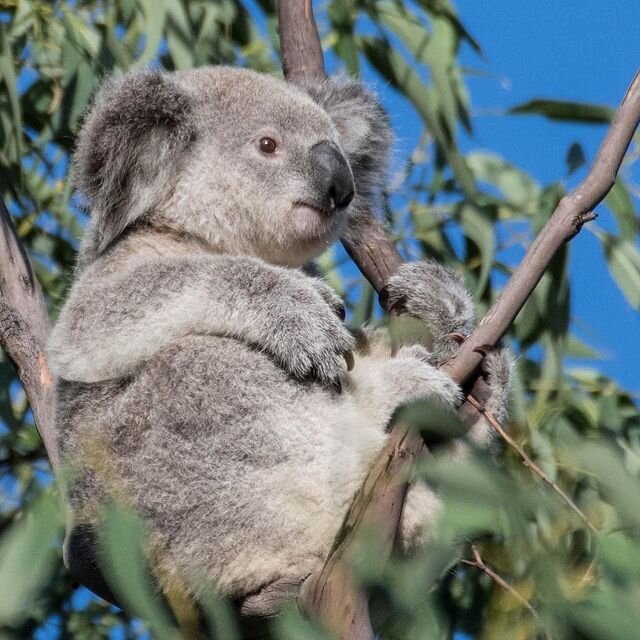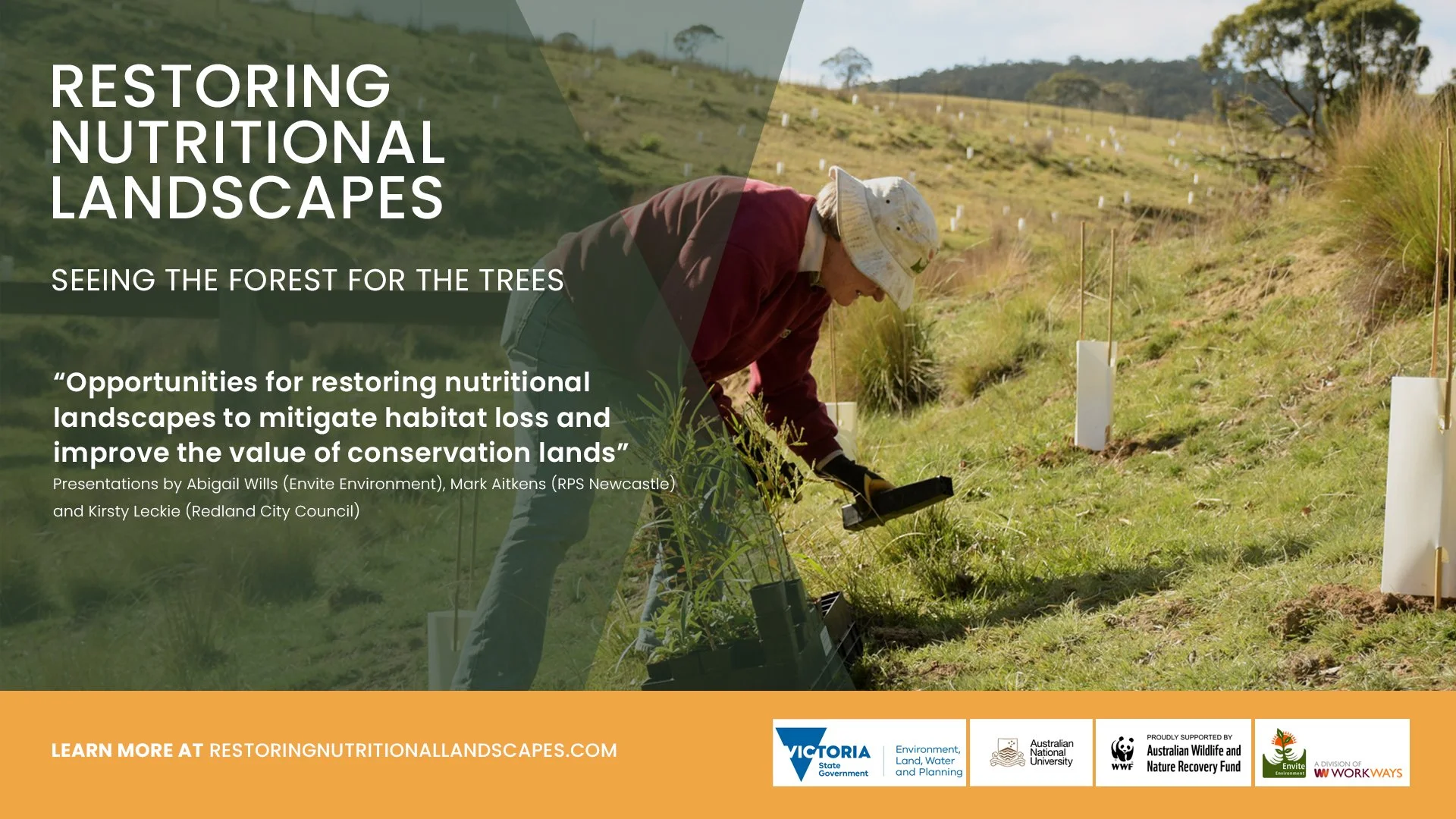
Restoring Nutritional Landscapes Workshop, Dec 6th 2021
Workshop Program and Presentations
Session One “Applying what we know about the nutritional ecology of marsupial folivores to landscape management”
Are you interested in planting forests that will be food for eucalypt folivores like greater gliders and koalas? How can we use the past 40 years of research on eucalypt-folivore systems to inform landscape restoration? Dr Karen Marsh and Dr Kara Youngentob discuss applying what we know about nutritional ecology to revegetation practice. We also talk about important directions for future research to fill critical knowledge gaps in this area.
Image by Kara Youngentob
Session Two “Opportunities for restoring nutritional landscapes to mitigate habitat loss and improve the value of conservation lands”
Improving pasture for grazing livestock is a common strategy that farmers use to increase yields. Can we similarly increase the carrying capacity of landscapes for threatened native folivores while avoiding risks like overbrowsing? Could restoring degraded habitat with better quality food be a tool for mitigating habitat loss in areas where animals are loosing ground to landscape change? Who would use these strategies and how could we upscale them? Are there opportunities for synergies with other reforestation initiatives, such as carbon farming, so we plant the right trees in the right places? We hear from landscape management practitioners who are interested in restoring nutritional landscapes as part of broader conservation initiatives.
Image by Brett Mezen
Session Three “Building on best practice forest restoration”
In partnership with Envite Environment, a group of ecologists from The Australian National University are about to embark on a landscape-scale experiment in East Gippsland to trial strategies to reduce the proportion of Silvertop Ash in regenerating forests. Silvertop Ash seeds prolifically after fire, has a very resilient seed bank, and tends to increase in abundance after landscape disturbance. Unfortunately, it is often very poor quality food for marsupial eucalypt folivores like the greater glider and the koala. We will trial methods to suppress silvertop regrowth and increase the proportion of locally appropriate eucalypt species that are better quality browse for these folivores. However, being ecologists, we have a lot to learn about growing forests.
If you are a traditional custodian, forestry and/or silviculture expert, we need your help. We want to do more than just plant food trees, we want to restore these ecosystems. There are enormous potential benefits for a wide range of flora and fauna. However, it will take a village of collective knowledge to raise these forests.
This session began with a short presentation about the Silvertop Project. We also provide a brief overview of our implementation strategy. We welcome questions, suggestions, constructive criticism, and especially solutions to obstacles that we are likely to encounter. At the end of this session, we provide information about how you can contact us if you would like to continue the conversation or get involved in other ways including fieldwork and research opportunities.
Image: WWF-Aus / Leonie Sii






